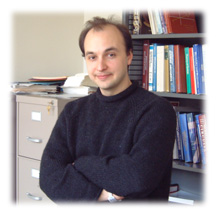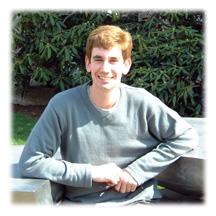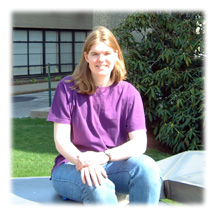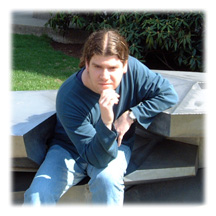 |
 |
||||


Office: 13-3138, Email: bulovic@mit.edu
Phone: 617-253-7012, Fax: 617-258-6640
Vladimir Bulovic joined the faculty of MIT in July 2000 as an Assistant Professor in the Electrical Engineering and Computer Science Department. Just prior to joining MIT, he was a Senior Scientist and Project Head of Strategic Technology Development at Universal Display Corporation (UDC). At UDC he worked on on the application of organic materials to LEDs for full color flat panel displays and thin film photovoltaics for solar cell and detector applications. Prior to joining UDC he worked in Princeton's POEM Center as a graduate researcher (1993-1998) and research associate (1998-1999). At Princeton, Prof. Bulovic participated in a series of projects examining the optical and electrical properties of vacuum deposited amorphous and crystalline molecular organic thin films and devices. From 1991-1993, Prof. Bulovic worked at Columbia University's Microelectronics Sciences Laboratory, where he examined image-potential states and resonances on metal surfaces utilizing nonlinear two-photon photoemission spectroscopy.

Office: 13-3146, Email: cmadigan@mit.edu
Phone: 617-452-3181, Fax: 617-258-6640
Conor Madigan joined the group in September 2000 as a new graduate student. While earning his B.A. in Electrical Engineering at Princeton University, Conor participated in a number of research projects involving organic electronics. During his junior year he investigated the improvement of light out-coupling from OLEDs with backside surface pattering. During his senior year he investigated the patterning organic films using ink jet printing. During the summer of 1999, Conor worked at the IBM Zurich Research Lab, where he used impedance spectroscopy to study the physical operation of small molecule OLEDs. In addition to his work on organics, Conor worked extensively while at Princeton on developing an ultra-efficient boolean satisfiability solver, known as Chaff, which a number of EDA companies are in the process of licensing.
Conor's current work involves the development of a novel method of depositing organic thin films from solution sources, and experimental and theoretical physical investigations into excitonic processes in disordered molecular organics.

Office: 13-3146, Email: dlightly@mit.edu
Phone: 617-452-3194, Fax: 617-258-6640
Debbie Mascaro began her graduate studies in the Department of Materials Science and Engineering at MIT in the fall of 1996. She joined Prof. Timothy Swager's research group (Department of Chemistry) and began her research in the area of conjugated polymer sensory materials. Her research changed focus when she spent the summer of 1999 at the IBM T. J. Watson Research Center in Yorktown Heights, NY, where she investigated organic thin film transistors (OTFTs) based on soluble organic semiconductors. During a second summer at IBM, her work focused on pentacene OTFTs. Since the arrival of Prof. Bulovic at MIT, Debbie has been co-advised by Prof. Swager and Prof. Bulovic. Prior to beginning graduate school at MIT, Debbie attended Gustavus Adolphus College in Saint Peter, MN, where she earned a BA in physics in 1995.
Debbie is currently working on methods of obtaining preferential crystal orientation during vapor deposition of semiconducting organic molecules. This work is being done in collaboration with Prof. Hank Smith (EECS).

Office: 13-3146, Email: sethcoe@mit.edu
Phone: 617-452-3210, Fax: 617-258-6640
Seth Coe graduated in the class of 1999 from Brown University with an Sc.B. in electrical engineering. He then spent a year as a Staff Engineer at the Boston based research company Foster-Miller, Inc., in the Emerging Technology division of the Materials Technology Group. While there he worked on a wide variety of government contracts which served to strengthen his interest in using unique material sets for optical, electronic, and optoelectronic applications.
Seth began work on his Ph.D. in July of 2000. Since joining LOOE, Seth's research has focused on incorporating inorganic luminescent materials into organic LEDs. In addition he is investigating novel techniques of energy transfer from inorganic to organic materials. Also of interest is the problem of outcoupling efficiency in OLEDs. In his spare time, Seth can be seen trying to convince the citizens of metro Boston to buy him a pool table.
